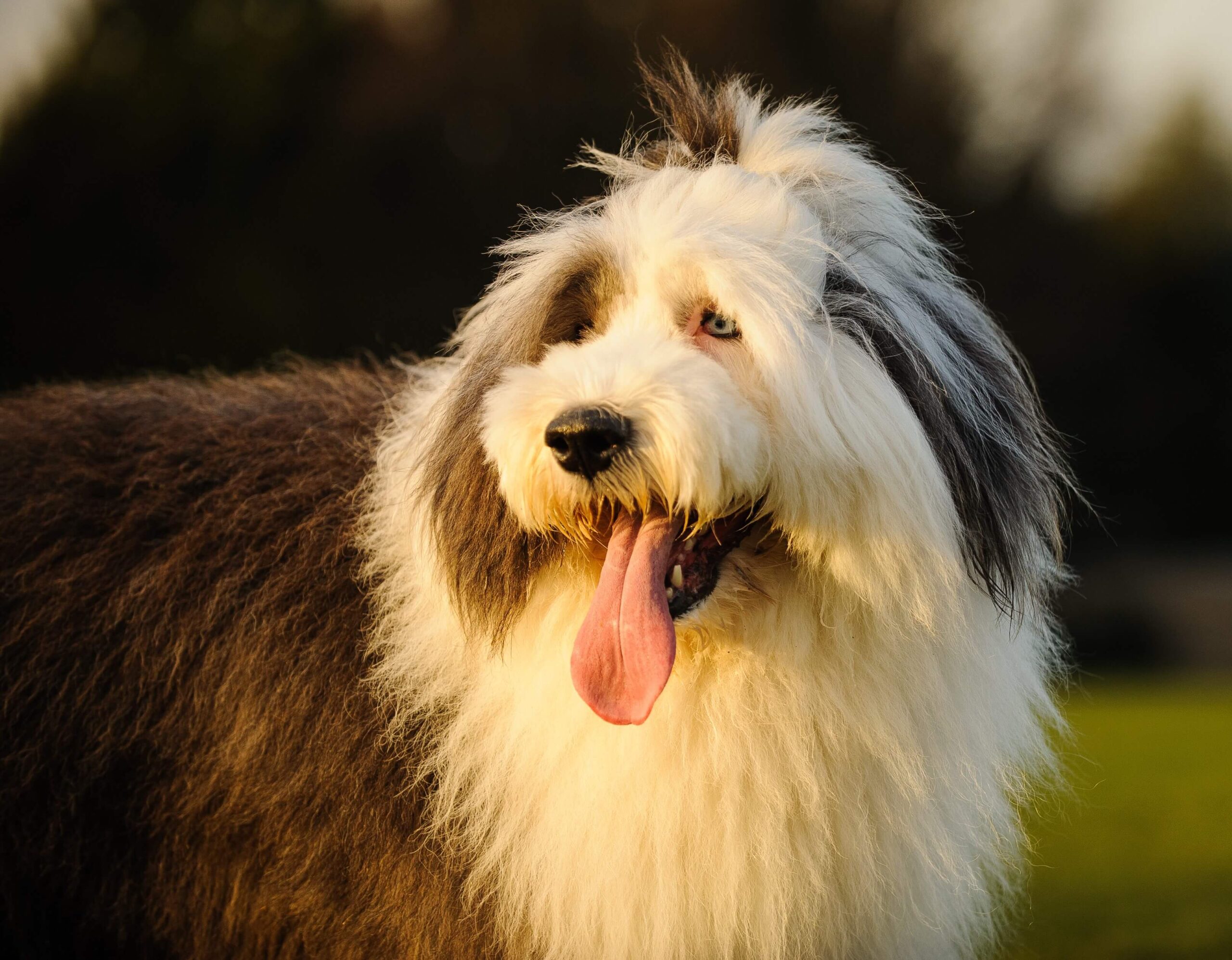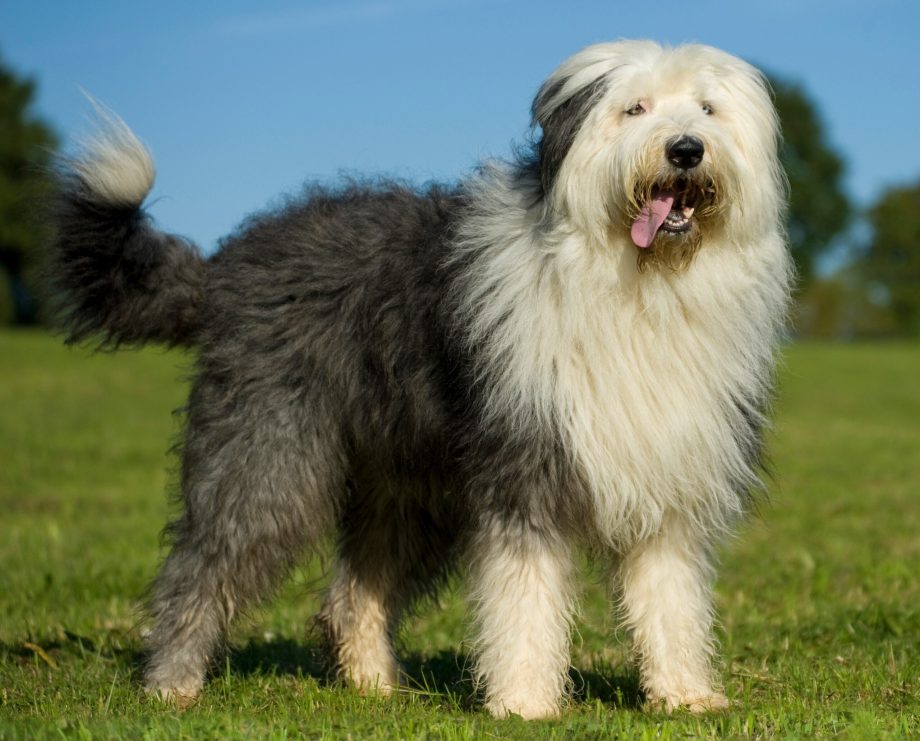The Old English Sheepdog is a big agile dog, bred to herd and instantly recognisable by its iconic and shaggy grey and white coat.
They are large, active dogs which have strong compact bodies hidden beneath their wealth of fur and a distinctive bear-like gait. Much of their face is hidden by hair unless sporting a peek-a-boo hairdo, but what lies beneath are dark or occasionally blue mischievous eyes. Until recently, the breed’s tail was commonly docked but it is largely accepted now that the bobtail is no longer appropriate with many countries having banned cosmetic docking. The tail of an Old English Sheepdog should be long and feathered. Their most distinctive feature is of course their coat, which is long, thick and shaggy and comes in shades of grey, grizzle, black, blue, or blue merle, with optional white markings. These big beautiful dogs are loveable and affectionate and relish spending time with their owners with whom they form close bonds. They are also super active and need lots of opportunities to play, run and explore. Old English Sheepdogs are also smart, with an independent streak which can make them strong-willed, so training can be particularly useful. This is also a breed known for its sense of humour and will certainly keep its owners entertained. Old English Sheepdogs are typically sociable dogs and are generally friendly around other dogs as long as they have received lots of good early socialisation with lots of other dogs. Their strong hunting instincts make them less suitable to be housed with other pets, although they will generally get along well with a cat they have grown up with. These happy, humorous dogs suit active households with lots of space and owners who are ideally around all day long.
History

The Old English Sheepdog probably derives from European sheep herding dogs, with input from the Scottish Collie and Bearded Collie. It was developed to be a large dog capable of driving cattle and sheep and guarding against large predators such as wolves. Its thick coat was easily maintained by simply shearing it off when the sheep were sheared each spring.






